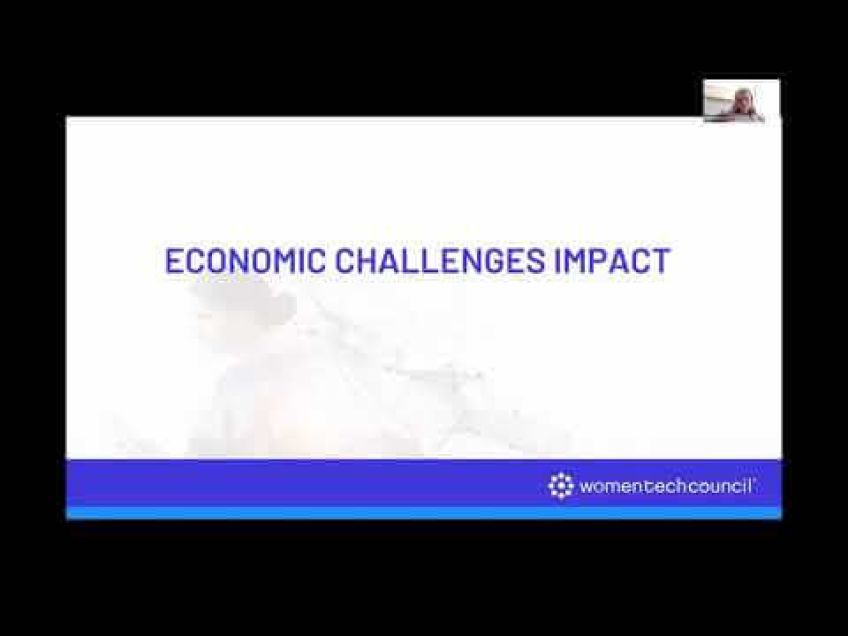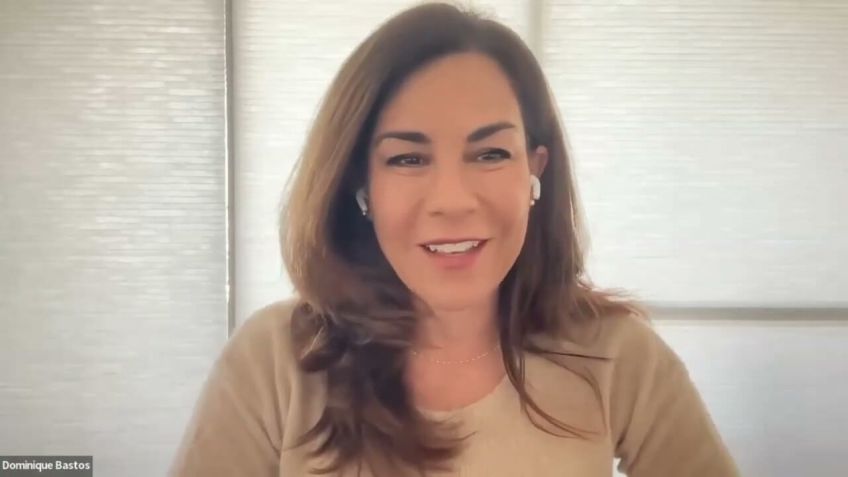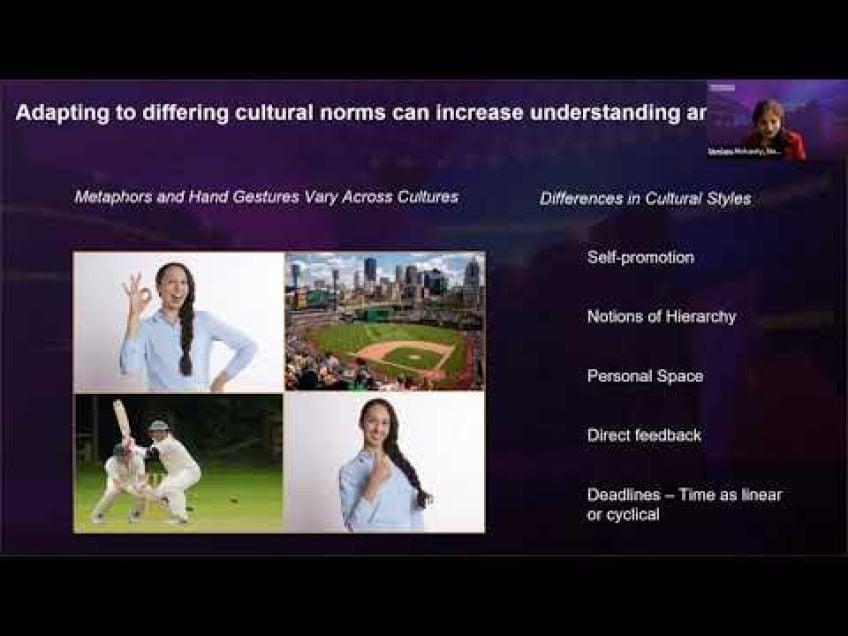Carly Coleman - Strategies for creating an on-demand workforce
Embracing Remote On-Demand Working: Navigating the New Normal
In today's rapidly evolving job market, remote on-demand working is becoming the norm rather than the exception. With a staggering 39% of adults considering quitting their job if not offered remote work flexibility, as reported by Bloomberg, it's clear that workplace dynamics have fundamentally shifted.
The Future of Work: Remote and On-Demand
Remote on-demand work concerns bringing on highly skilled freelancers temporarily for specific projects. This model gives companies access to top talent worldwide without increasing their FTE count. Undeniably, this is advantageous for both clients and talents, but it also has unique benefits for women in tech, allowing them to work for leading companies globally, from the comfort of their homes and on their own schedules.
Delving Deeper: The World of Toptal
At Toptal, a network comprising the top 3% of freelancers globally, we specialize in connecting companies with the right remote on-demand talent, usually within 24 hours, and help them to successfully navigate their freelancing careers.
Why Choose Remote On-Demand Talent? Pros and Cons
While the reasons to opt for on-demand talent can be manifold, a few prominent ones include faster lead times, scalability, partial resources, and access to specialist expertise. On the flipside, cost savings and not needing to manage the hiring process might appear as benefits but can lead to pitfalls if not carefully addressed. Through sound preparation and anticipation of potential challenges, the successful implementation of on-demand talent can be achieved.
Choosing Your Hiring Model
Companies need to evaluate five key factors: time to engage, talent vetting, administrative overhead, potential risks, and cost when deciding between hiring directly, utilizing a basic marketplace or partnering with a premium network like Toptal.
Finding the Perfect Match
Ensuring a perfect match between client and freelancer involves carefully considering project scope, technical skills, industry experience, soft skills, working style, time requirements, and rate.
Starting off Strong: Kickoff Calls and Project Commencement
Successful projects start with effective communication and a well-planned kickoff call, addressing project scope, goals, deliverables, and timelines. Also, having everything set up and available for your freelancer from day one can boost productivity.
Mastering Asynchronous Work
Embracing asynchronous work involves investing in the right tools, scheduling in advance, cutting communication cycles, and recording meetings and demos to ensure project momentum and keep all stakeholders abreast.
Becoming a Remote On-Demand Freelancer
Freelancing offers highly attractive benefits, including flexibility, time and cost savings, and the opportunity to work for multiple international companies. Utilizing a marketplace brings further advantages like better access to vetted clients, stability, and administrative support; however, at Toptal, we go a step further by offering career coaching, technical training programs, and a sense of community.
Conclusion: Preparing for the Future of Work
The world is ready for the shift to remote on-demand working, and so should you be. Choosing the right model, planning carefully, and moving swiftly will set you up for success in this exciting new world of work. Whether you're building a remote team or transitioning into a remote freelancer role, the future of work is here, and it's remote and on-demand.
Video Transcription
We're going to be talking today about remote working and specifically remote on-demand working.Um Everybody knows this now, but the way that we work is changing and the last year has proven to be um has proven to managers and workers alike that people can be productive and in fact, even more productive when they're outside of a central office. So increasingly employees are demanding flexibility to work from home. And in fact, Bloomberg actually reported last week that 39% of us adults would actually consider quitting their job if their employers weren't flexible about remote work. That's a pretty incredible statistic.
Now, we also know the future of work is not just remote, but it's also on demand on demand. Sounds like a fancy term, but it simply just means that companies can hire highly skilled freelancers um temporarily to scale up or scale down or work on very specific projects as needed. When we pair these two things together, remote and on demand, we see that on-demand remote work really gives companies access to the best, most highly skilled talent in the world without actually having to increase their FTE head count. Now, this is not just great for clients and talents.
It's really especially great for women in technology. We all know we're all busy women. We have aspirations of working for really top companies in the world. But we also have a lot going on and remote on-demand work is really incredible because it allows women to work for top companies in the world, but do it from their own homes on their own schedules wherever they are in the world. Um I personally found it's a really great way to allow you allow women to take control of their careers to improve their work life integration, something I've seen in my time at top town. So today we're going to talk about how people can prepare for this, whether you are a company or a, a talent in the network. If you're interested as a company, you want to know how to hire this way. And if you're a talent that wants to work this way, what do you need to know? So I'll give a super short introduction because Margo already um kindly introduced me. Uh But as Margot said, my name is Carly Coleman. I'm the director of talent success for Toptal. Top Tail is an exclusive network of the top 3% of freelancers around the world. We have thousands of talent in more than a 100 countries who are leading developers, designers, product managers, project managers, and finance experts.
We specialize in working with remote on-demand talent that means that we specialize in connecting companies with the right talent for their projects, usually in less than 24 hours. So we work really quickly. I joined Toptal last year as the Director of Talent Success. As Margo said, I oversee the end to end talent journey and we're building a lot of really cool and interesting programs to make sure that our talent can have really successful freelancing careers with top talent. And finally, as I mentioned, I myself am a woman in tech. I've been in the tech industry for more than five years. I've worked in a variety of different roles and experienced the challenges and opportunities. So this topic is very near and dear to my heart. Now, because of my role at Toptal, I learned a lot about what it takes to make a successful relationship when we pair clients and talent. So as you'll see today, we'll cover a number of topics and my goal is really for you to understand if this model might be right for you. And if so how you can better navigate working in this fashion. So with that, let's dig in the first thing I want to talk about today is why for this first portion of the presentation, we're going to take the, the focus of the company point of view.
But there's a lot of really great anecdotes here that I think are relevant for talent. So if you're a company, you might be thinking that on demand. Talent might be right for you before we dig into how to do this. I really want to stop and explore the why. There are a ton of great reasons to go remote, but there's honestly a few that aren't so great either. First, let's talk about the good reasons I think for stand out first, faster lead time, you need to move quickly and you just don't have time for a long drawn out hiring process. Second, scalable resources if you need five people today to really push a big project forward, but you don't necessarily need them when that project's done. Remote and on demand is great for you. Third, partial resources. Sometimes there's an expert that you need on an ongoing basis, but you just don't need or can't afford them full time. This can be a really great way to bring in a fractional CFO or a part time UX designer or anything of that nature and finally access to expertise.
Sometimes you simply don't know what you need yet and it would be really foolish to hire someone with the wrong skill set. This model allows you to get access to world class experts who can advise you on the path forward, help you scope your project and then hand it back to your team to actually do the execution. Now I mentioned there are also some bad reasons. Here are two of the most common pitfalls I've seen. The first is this idea that it'll be cheap. Now, if cost savings is your primary motivator in hiring remote, it's really worth digging deeper to make sure you aren't setting yourself up for failure. On-demand. Remote talent can often be world class and less expensive than on-site talent. But you really want to avoid that race to the bottom mentality because often the lowest cost person is not going to have all of the right skills and expertise to be successful. The second issue is this idea of I won't have to worry about it. This is another potential trap. Now, you can set up any type of working relationship you want between a client and a freelancer, but it's really important to do the work ahead of time to prepare that person to be successful. Have you scoped out the project? Have you provided clear guidance?
Have you set the proper expectations around timelines and milestones? Even the most senior independent freelancers need guidance and context as they kick off to make sure they can meet those expectations. So now that we've talked about why let's start talking about how there are a few different models to consider when engaging remote talent. And there are five different factors that I suggest you look at when choosing the right way to engage. Now, there are three different models, as I mentioned. First, you can hire directly using your internal recruiting methods. Second, you can hire from a basic marketplace like an upwork or indeed, that makes resumes available for you to search and contact um directly contact the person that looks like a fit or third. You can partner with a premium talent network like Tal which offers a higher level of talent vetting and support as you manage your projects. Now, as I mentioned, I think there's five different things to consider when you're thinking about what is the right model for you. The first is time to get started. Most people don't have a network of freelancers at their fingertips, which is why hiring directly can be really slow here.
If speed is helpful, um marketplaces and networks of all kinds can speed this up by giving you access to really large groups of talent quickly. The second aspect is talent vetting and in my opinion, this really comes down to time and expertise. Simply put, are you comfortable assessing the technical skill of the talent that you're hiring? And you have the time to review profiles and conduct interviews if you're hiring directly, this is fully on your shoulders if you're short on time, but still technically proficient.
A marketplace can be a really great way to allow you to easily search and filter through talent. But if you aren't familiar with the technical tools that you're hiring for, for instance, I'm a business person. But if I needed to hire a creative designer or a developer for goodness sakes, um a premium marketplace can be a really great option because you have somebody who is skilled and a technical expert who does the bulk of the searching for you and really helps position and explain why this expert is the best fit.
The third category is administrative overhead. So this includes topics like writing contracts and managing payments and often doing these items across borders. This can be logistically overwhelming. So it's an important thing to think about. Fourth is potential risks. Now, I will say these are uncommon, but unfortunately, there are some schemes in the global talent marketplace such as outsourcing work, fraudulent credentials or even just simply verifying that the talent has a quality webcam and internet connection. As we're seeing here, both of myself and Dana, we know sometimes hiccups happen, but we want to make sure that those things are available on an ongoing basis. Now again, while these aren't common, any service with external vetting can help protect you. In summary, if you have the time the network, the expertise to source directly, that's a really great option. But if you need support on any of these matters, it can make sense to consider um where you should pay an additional cost to get more support, speaking with any marketplace or premium network, they should be able to help you understand the tradeoffs that they offer. Now, we'll talk a little bit more about this later. But if you're a freelancer, you can use a really similar checklist to figure out which model is best for you. Now, let's talk about making the right match regardless of which model you choose.
You'll want to consider many of the same items when you are looking for the right talent to work on your project. And if you are a freelancer, these are a lot of the same points. I would encourage you to ask when you're looking to meet potential clients. The first is project scope. How well scoped out is the project that you you need done? Do you have existing processes in place with a clear project scope that a person can just plug into? If so you can likely get away with somebody more junior. But if this is a new project from scratch where you may run into issues or you are some sort of early stage company with no tech team and you need help scoping things out this much more free form project can be much better suited to somebody experienced who can help you navigate.
The second is technical skills and industry experience. What are the hard skills that are must haves versus nice to haves? This can include everything from languages to libraries, to paradigms and thinking about really unique skill combinations that you might need. Finally, of course, is there any particular industry expertise or somebody with a particular work style methodology? The third is soft skills and working style and this is where it's really important to think about the client and how your company operates. What is the structure of the team that this person will be joining? Are they really independent or are they joining a well oiled machine? How established are processes? Do you have a project manager in house or do you need to hire a talent that can self manage? And finally, what level of English proficiency and communication is required if this person is really working independently alone and only sending email updates back and forth. It's a very different level of skill required than somebody that's gonna play an important cross functional role that needs to communicate effectively last but not least are time requirements and rate when thinking about time. Think about the length of the project. Um not just days, weeks, months, but also think about hours per week at top. Tell, we work in increments of part time, full time and hourly. Um as well as thinking about time zone overlap. You don't always need to hire somebody in the same time zone as you.
But you do need to think through when you need them to be available for meetings or quick responses. So we use the idea of core working hours at top 10 and last rate. Now, it's really important to understand your target budget and how and where you might be willing to flex to meet your skills above. But it's also important to understand pricing structures. Are you paying per hour per week, per month, per project? And of course, ask about discounts for different commitment options such as long term or uh more hours per week. Now, we'll talk about kicking off the project. Once you've found the perfect talent for your project or the perfect perfect client for your work style, it's really important to kick off. This is where you want to lay the foundation for a really great relationship and these talent, these tips are useful for both parties. First, communication, as with any good relationship, communication is key. Um When we actually look at projects that don't work out when we go back and diagnose them. Communication is often the number one issue at fault. Oftentimes when we dig in, we'll see um situations arise where both parties were waiting on the other one. But they didn't make that really clear.
And but by the time they realized that they didn't know whose court the ball was in, they had wasted two weeks and lost some really valuable time on the project. A great freelancer is a great communicator and a great project manager. But as the client, you should always make sure that you're providing that clear direction and over communicating. Second, we want to talk about project Kickoffs. We recommend every project starts with a kickoff call. As you'd expect you really want to discuss the project scope, the goals, the deliverables, the timelines, but something people often skip is pausing and actually asking and discussing if that feels reasonable to the freelancer, they're hired now that they know more about the project.
Are they actually comfortable with the work that needs to be done at that point in time, some people end up parting ways at this point, which is always a little disappointing, but it's better to find this out now than after a project goes south where a lot of milestones have been missed.
Third, talk about work styles in that kickoff, um Set expectations for things like how quickly do you expect people to respond to emails or slack messages? Are there core working hours that you need to be online? What are the regular checkpoints to ensure that things are on track?
And most importantly, what are the tools that you guys use? Slack Zoom teams, email chat, text phone. There's a million different tools we're using today and it's really important to make sure that you're working in the way that best adapts to the client. And finally, as the client, you need to make sure that you are ready for your freelancer to get to work. The absolute best way to lose time on a project is to not be ready on day one. Make sure you have everything set up from access to critical systems and access to critical people. It's really important that your team has blocked time to do that critical information sharing. All right, let's talk about embracing asynchronous work. Once you're kicked off, it is time to work now.
I would say we are all experts in remote work these days, but many of us are not actually that experienced in asynchronous work. So I wanted to take some time to talk about that. These are some of my best tips first invest in the right tools. So at top, we use a ton of tools for virtual collaboration. We use mirror for white boarding. We use a tool called loom to make short little demo videos. And of course, we are all over Google Docs and Slack. My second tip is to schedule things in advance. When everyone's on a different schedule, you can't always assume that people will be available to hop on a call and hash things out at any moment by scheduling in advance, you really allow people to prioritize key meetings and respect people's flexible schedules and really make the most of those core working hours.
Third is to really cut out communication cycles. I think about this often at top tail because I have teammates that are on the opposite side of the world that you know, work 1011 hour hours off from me. If my message isn't really perfectly clear, we can easily lose an entire 24 hour cycle playing tag. So I combat this by communicating more information. I like to anticipate questions that other person may have next steps they may take. And if I can answer those in advance or provide them with some sort of conditional guidance, then I can continue to make progress. So here's a really good example. Rather than telling a developer go investigate that software bug, I might say go explore the bug on the landing page. If you find the fix takes less than two hours, please work on it. If the fix is going to be more complex, please send a note to John to let him know but then continue working on the backlog of tickets. Both are good directions. But the second one is much more likely to help me get the result that I want tomorrow back online. And last but not least, I recommend recording meetings and demos. Sometimes you just simply can't get everyone in the room at the same time.
And one trick we use at Toptal is to have the presenter record a short presentation or demo, share it with the group and then open up a slack channel to discuss. This is a really great tip because sometimes you can attend a meeting whenever it fits your schedule. All right, in our last few minutes today, I want to make sure that we are talking about benefits for on-demand talent more and more. I would say top talent is absolutely choosing to work this way. We've seen it over the last year with COVID, but we are increasingly seeing it happen. I think we all know that the benefits of a remote on-demand work style. We know what a lot of these are flexibility, time savings cost savings with no commute, the ability to work from anywhere, whether that means relocating to less expensive cities or enjoying time where you can travel and spend time with different friends in different areas. And of course, the opportunity to work for a variety of companies really opening up the world of possibilities rather than only being limited to those companies that are geographically near nearby you. Now, there's a lot of benefits when you're thinking about being a freelancer and choosing to work through a marketplace. So we talked a little bit about the different models.
Before when you work through a marketplace, there's a lot of benefits, it offers you better access to clients and pre vetted higher quality clients oftentimes better stabilities with new opportunities posted every single day, there could be little downtime between roles and of course, a lot of administrative support.
There's a lot of work in freelancing, managing payments and contracts and marketplaces could be really helpful there. But I wanted to stop and take a minute to talk about what we're doing at top, which is actually taking the benefits one step further. Our goal is really to elevate freelancing as a career. We want people to be successful and we want people to have these high quality top tier careers and not just think of freelancing as a backup plan. So we do a number of things like offer career coaching, technical training programs and a sense of community programs to really offer you that sense of belonging and relationship with other freelancers. Um I'll wrap up really quickly here. Um The bottom line is the world is ready for this. And so are you think very carefully about what model is right for you? It's, it's a really exciting world, but it's not a one size fits all process. So there's a lot of ways to be thoughtful about how you want to work. And then my last tip is to plan carefully and move quickly. You can really move quickly in this on demand. Talent world. You can hire somebody today and have them working by the end of the week. But before you dive in, it's really important to reflect on what works best for you and then spend that extra effort up front.
I think that we are about at time here and I know Margot, you're probably going to come back on and I won't be able to hear what you say. Um So I hope that we've nailed the timing here. I hope this presentation for you guys has really removed some of the fear and uncertainty around global work. If you would like to learn more about building your own remote team, or if you'd like to learn about becoming a remote freelancer, I invite you to check out top tells booth where you can talk to our team and learn more





